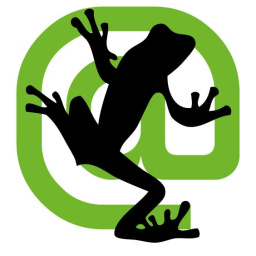Optimize with Google Analytics
by Abbs
Posted on 2023-05-18 08:03:46
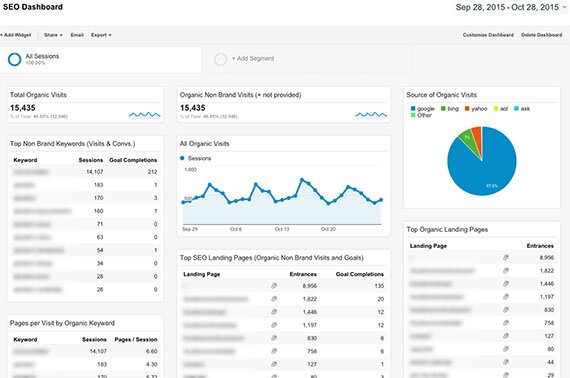
Using Google Analytics
Google Analytics is an effective tool that permits website owners to track and analyze a wide range of data connected to their website's performance. By using Google Analytics, website owners can acquire insight into the behavior of their website visitors, which can be used to improve website design, user experience, and marketing efforts.
Setting Up Google Analytics
To start using Google Analytics, website owners require to create an account and set up tracking on their website. To create an account, go to the Google Analytics website and follow the instructions supplied. When the account is established, website owners will be offered with a tracking code that needs to be contributed to their website.
TIP:Content is king, but structure is queen! Format your posts with headings, subheadings, and bullet points.
The tracking code can be added to the header or footer of the website's HTML code, and once included, Google Analytics will start tracking data connected to website visitors.
Understanding Google Analytics Data
Google Analytics offers website owners with a large range of data connected to their website's performance. Some of the most important data to track includes:
Traffic Sources
Traffic sources describe the places where website visitors come from. This includes online search engine, social media, other websites, and direct traffic. By tracking traffic sources, website owners can acquire insight into where their website visitors are coming from, which can be utilized to inform marketing efforts.

Audience Demographics
Audience demographics describe the characteristics of website visitors, such as age, gender, place, and interests. By tracking audience demographics, website owners can gain insight into the types of individuals who are visiting their website, which can be used to notify website style and marketing efforts.
Behavior
Habits data describes the actions that website visitors handle the website. This includes pages viewed, time invested in the website, and bounce rate. By tracking behavior data, website owners can get insight into how website visitors engage with the website, which can be utilized to improve website style and user experience.
Conversions
Conversions refer to the actions that website visitors take on the website that are considered valuable, such as filling out a contact type or buying. By tracking conversion data, website owners can gain insight into how well their website is carrying out in regards to achieving business objectives.
Using Google Analytics to Improve Website Performance
By utilizing Google Analytics to track and evaluate website performance data, website owners can identify areas where enhancements can be made. For example, if the bounce rate is high on a specific page, website owners can evaluate the page to identify possible issues and make improvements.
TIP:Say goodbye to thin content! Beef up your pages with valuable information and relevant keywords.
In addition, website owners can utilize Google Analytics to track the performance of marketing projects, such as social media advertising and email marketing. By tracking the performance of these projects, website owners can identify which projects are most effective and make changes as needed.
Creating a Google Search Console Account
Google Search Console is a totally free tool offered by Google that permits website owners to monitor their website's presence in Google search engine result. It offers valuable insights into how Google crawls and indexes your website, in addition to informs you to any problems or mistakes that may be impacting your site's performance in search.
Why Create a Google Search Console Account?
Creating a Google Search Console account is an essential action for any website owner who wishes to improve their website's visibility in Google search engine result. Here are some of the crucial benefits of using this tool:
1. Display Your Site's Performance in Google Search
Google Search Console offers in-depth reports on how your website is performing in Google search results. You can see which pages are getting the most clicks, which questions are driving the most traffic, and how your website ranks for specific keywords.
2. Discover and Repair Technical Issues
Google Search Console informs you to any technical problems or errors that might be affecting your website's performance in search. For example, if Google is having problem crawling or indexing your website, Search Console will let you know so you can fix the issue and improve your site's visibility in search.
3. Submit Sitemaps and URLs for Crawling
Google Search Console permits you to submit sitemaps and specific URLs for crawling, which can help ensure that Google has the ability to find and index all of your website's pages.
4. Screen Backlinks to Your Site
Google Search Console also supplies information on the websites that link to your site, which can help you identify chances for link building and likewise monitor for any possibly harmful backlinks.
How to Create a Google Search Console Account
Creating a Google Search Console account is simple and complimentary. Here are the steps to follow:
Action 1: Go to Google Search Console
Go To the Google Search Console website (https://search.google.com/search-console/about) and click the "Start Now" button.
Action 2: Include Your Website
Enter your website's URL in the provided field and click "Include a Residential or commercial property." You will require to validate that you own the website by adding a little piece of code to your website's header or publishing an HTML file to your website's root directory.
Step 3: Set Up Your Account
Once you have verified that you own the website, you can set up your Search Console account. You can select to receive email alerts for signals and choose which users have access to the account.
Step 4: Start Utilizing Search Console
Once your account is established, you can start using Search Console to monitor your website's performance in Google search results and repair any concerns that may be affecting your site's visibility.
Secret Takeaways
- Google Search Console is a complimentary tool provided by Google that allows website owners to monitor their website's existence in Google search engine result.
- Creating a Search Console account is essential for monitoring your site's performance in search and fixing any technical problems or mistakes that may be affecting your site's visibility.
- To create a Google Search Console account, go to the Search Console website, include your website, verify that you own the site, and set up your
Advantages of Using Google Search Console
Creating a Google Search Console account is an important step in optimizing your website for search engines. The benefits of using GSC include:
TIP:The power of user-generated content! Encourage reviews and testimonials to enhance credibility.
1. Identifying Technical Issues
GSC can assist you identify technical concerns that may be affecting your website's search rankings. These issues can include crawl mistakes, broken links, and security issues.
2. Monitoring Your Website's Performance
GSC provides you with valuable data on your website's performance in Google search results page. You can see which search queries are driving traffic to your website, which pages are performing well, and which pages are not getting any traffic.
3. Sending Sitemaps and Specific URLs for Crawling
With GSC, you can submit sitemaps and private URLs for crawling by Google. This can assist ensure that your website's content is being indexed by Google and appearing in search results.
4. Comprehending How Google Views Your Website
GSC provides you with insights into how Google views your website. You can see which keywords your website is ranking for, the number of impressions and clicks your website is receiving, and which pages are being crawled and indexed by Google.
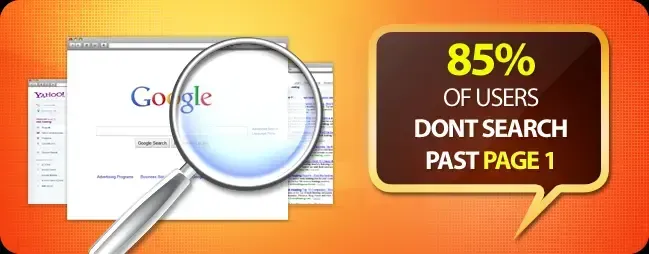
Comprehending Google Penalties
Google Penalties are a form of penalty imposed by Google for breaking its Webmaster Guidelines. These charges can result in a considerable decline in your website’& rsquo; s natural search traffic, and it is essential to understand them to avoid sustaining them.
Types of Google Penalties
There are 2 types of Google penalties: manual charges and algorithmic charges.
Handbook Penalties
Handbook penalties are imposed by a Google employee by hand reviewing a website and figuring out that it breaks Google's Web designer Guidelines. The staff member can then apply a charge that will decrease the website's search ranking or remove it from Google's search results page entirely.
Handbook charges are less common than algorithmic penalties, but they can be more severe. A few of the reasons why a website might go through a manual penalty include:
TIP:Don't overlook the H1! Make sure your main headings capture attention and reflect your content.
- Unnatural or spammy backlinks
- Thin or low-grade content
- Keyword packing
- Masking or other types of misleading practices
As soon as you have actually been hit with a manual charge, Google will send out an alert to your Search Console account, providing details on the penalty, and giving you an opportunity to deal with the issues.
Algorithmic Penalties
Algorithmic charges are applied automatically by Google's algorithms when they spot an offense of Google's Webmaster Standards. These charges can take place if a website is engaging in spammy practices or has low-quality content.
Unlike manual penalties, algorithmic charges do not featured a notice, making them harder to find. Nevertheless, you can identify algorithmic penalties by observing a considerable drop in your organic search traffic, typically after a significant update to Google's algorithm.
How to Prevent Google Penalties
The best method to prevent Google Penalties is to follow Google's Webmaster Guidelines. Here are some tips to help you avoid Google Penalties:
-
Develop natural backlinks: Prevent purchasing or exchanging links and rather concentrate on creating high-quality content that naturally attracts backlinks.
TIP:A picture is worth a thousand words and an alt tag! Optimize your image alt tags for improved SEO.
-
Avoid keyword stuffing: Use keywords naturally in your content without overdoing it.
-
Provide top quality content: Ensure that your content provides value to your audience and is useful and engaging.
-
Use Google Search Console: Display your website's performance using Google Search Console to identify prospective concerns and fix them quickly.
-
Keep up-to-date with Google's algorithm updates: Stay informed about Google's algorithm updates to ensure that you are following the latest standards.
Fixing Typical On-Page SEO Mistakes
On-page SEO is critical to the success of your website, but it's simple to make mistakes. The good news is that many on-page SEO mistakes can be fixed with a little effort and some basic understanding. In this chapter, we'll check out a few of the most typical on-page SEO errors and how to fix them.
Error # 1: Replicate Content
Replicate content refers to content that appears on more than one page of your website or on other websites. This can injure your SEO efforts due to the fact that online search engine don't know which variation of the content to index and rank.
To fix duplicate content, you need to identify the source of the problem. Use a tool like Copyscape to discover duplicate content on your website and on other websites. When you've identified the replicate content, you can either remove it or utilize canonical tags to tell search engines which variation of the content to index.
Mistake # 2: Keyword Stuffing
Keyword stuffing is the practice of using a lot of keywords on a page in an attempt to manipulate online search engine rankings. This can injure your SEO efforts since search engines consider this a kind of spamming.
To repair keyword stuffing, you need to create top quality content that provides value to your audience. Usage keywords naturally and sparingly in your content, and ensure they pertain to the subject at hand.
Error # 3: Poor Content Quality
Poor content quality can harm your SEO efforts due to the fact that search engines wish to provide their users with premium content. This implies that your content ought to be well-written, useful, and engaging.
To repair poor content quality, you require to take the time to create top quality content that provides worth to your audience. Make certain your content is well-written, helpful, and engaging. Usage images, videos, and other multimedia elements to make your content more fascinating and enticing.
Error # 4: Broken Links
Broken links are links on your website that result in pages that no longer exist. This can hurt your SEO efforts due to the fact that online search engine think about broken links to be a sign of a low-quality website.
To repair broken links, use a tool like Yelling Frog to find damaged links on your website. Once you have actually recognized the broken links, either eliminate them or update them with the right URL.
Error # 5: Missing Out On Alt Tags
Alt tags are used to describe images on your website to search engines. This helps online search engine understand the content of your website and can improve your SEO efforts.
To repair missing alt tags, go through your website and add alt tags to all of your images. Make certain your alt tags are detailed and include relevant keywords.
Error # 6: Slow Page Speed
Slow page speed can harm your SEO efforts since search engines think about page speed to be a ranking factor. Sluggish page speed can likewise harm user experience, which can lead to higher bounce rates and lower engagement.
To fix sluggish page speed, utilize a tool like Google PageSpeed Insights to identify locations where you can improve your website's performance. This may include optimizing images, decreasing server response time, and decreasing CSS and JavaScript.
Error # 7: Poor Mobile Optimization
With increasingly more users accessing the internet on mobile devices, it's necessary to have a website that is optimized for mobile devices. Poor mobile optimization can injure your SEO efforts due to the fact that search engines prioritize mobile-friendly websites.
To repair poor mobile optimization, utilize a tool like Google's Mobile-Friendly Test to identify locations where you can improve your website's mobile optimization. This might include using responsive design, optimizing images for mobile devices, and decreasing page load time.
Error # 1: Poor Keyword Use
Among the most important elements of on-page SEO is using keywords. Keywords are the words and phrases that people utilize to look for information online, and they play an important role in identifying where your website ranks in online search engine results pages (SERPs).
One typical mistake that website owners make is using too few or too many keywords on an offered page. Preferably, each page on your website should be optimized for one main keyword and several related secondary keywords. These keywords ought to be used in the page title, headings, meta descriptions, and throughout the content of the page. Nevertheless, it is necessary to utilize keywords naturally and avoid keyword stuffing, which can injure your SEO.
To repair this error, conduct comprehensive keyword research and identify the most important keywords for each page on your website. Then, optimize your content for those keywords while making sure that the content stays premium and legible for human visitors.
Mistake # 2: Thin Content
Another common on-page SEO error is having thin content, or content that doesn't provide adequate value or information for visitors. Thin content can lead to high bounce rates and low engagement, which can ultimately injure your SEO.
To fix this mistake, focus on creating premium content that offers real value to your visitors. Ensure that your content is useful, engaging, and relevant to your target market. Furthermore, ensure that each page on your website has enough content to provide genuine worth to visitors.
Error # 3: Replicate Content
Replicate content refers to content that appears on several pages of a website or across different websites. Duplicate content can hurt your SEO by puzzling online search engine and causing them to select which page to rank in search results page.
To fix this error, conduct routine content audits and eliminate any replicate content that you find. In addition, use canonical tags to indicate to online search engine which page should be considered the primary source of the content.
Mistake # 4: Poor Site Structure
Site structure refers to the manner in which your website is organized and how pages are linked together. Poor site structure can make it tough for online search engine to crawl and index your website, which can hurt your SEO.
To fix this error, make sure that your website has a clear and rational structure. Use internal links to link associated pages, and create a sitemap to assist online search engine understand the hierarchy of your website.
Error # 5: Slow Page Speed
Page speed is an important factor in determining where your website ranks in search results. Slow page speed can lead to high bounce rates and low engagement, which can harm your SEO.
To repair this mistake, carry out a page speed audit and identify any locations where your website could be optimized for faster load times. This might include optimizing images, compressing code, or utilizing a content delivery network (CDN) to deliver content faster.
Conclusion
By avoiding these typical on-page SEO mistakes and taking steps to repair any concerns that you find, you can improve your website's visibility in search results and attract more organic traffic to your site. Keep in mind to focus on creating premium content that supplies worth to your visitors, and constantly
Fixing common on-page SEO mistakes is vital to the success of your website. By attending to these mistakes, you can improve your website's search
Google Penalties can have a significant influence on your website's search ranking and organic traffic. Therefore, it is necessary to understand and follow Google's Web designer Standards to prevent them. By executing the tips outlined in this chapter, you can ensure that your website remains in good standing with Google and continues to attract top quality natural traffic.
Creating a Google Search Console account is an essential step for any website owner who wishes to improve their website's visibility in Google search results page. It offers valuable insights into how Google crawls and indexes your website, in addition to informs you to any issues or errors that may be affecting your site's performance in search. By following the actions outlined in this chapter, you can quickly create a Search Console account and begin using this valuable tool to improve your website's SEO.
Google Analytics is an essential tool for website owners who wish to improve the performance of their website. By tracking and examining data associated with website performance, website owners can gain insight into how visitors interact with their website and make improvements to improve user experience, increase conversions, and accomplish business goals.
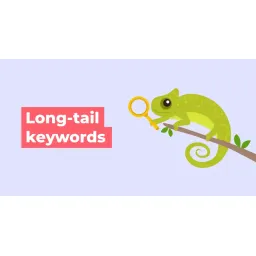 What Are Long-Tail Keywords and Why Should You Utilize Them?
In the ever-evolving world of Seo (SEO
What Are Long-Tail Keywords and Why Should You Utilize Them?
In the ever-evolving world of Seo (SEO
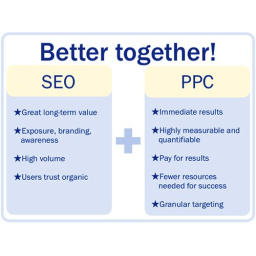 Making Use Of Paid Advertising for SEO
While organic search traffic is essential for any website, i
Making Use Of Paid Advertising for SEO
While organic search traffic is essential for any website, i
 Using Influencer Marketing for SEO
Influencer marketing has actually become a popular strategy for
Using Influencer Marketing for SEO
Influencer marketing has actually become a popular strategy for

